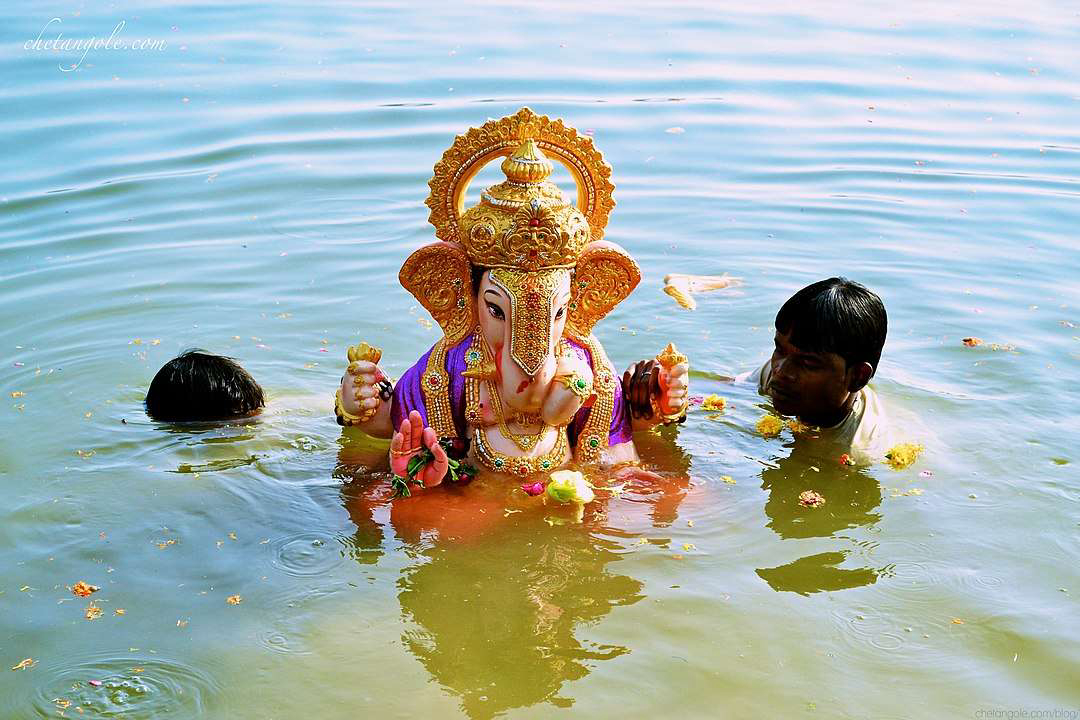
We are celebrating one of the most prosperous festivals in India, the ‘Ganesh-Utsav’. The grand arrival of Lord Ganesha fill our hearts with happiness and his visit to our home brings a lot of positive vibes. Lord Ganesha arrives at home as a member of the family, who visits the home for a few days and bless the entire family with his wisdom and knowledge. But Lord Ganesha leaves everyone teary-eyed when he takes off to his sacred home. This entire farewell ceremony of Lord Ganesha is hailed as ‘Visarjan’.
Visarjan is a ceremony of submerging the idol of Lord Ganesha in water. This ceremony gives honour to the beginning of Lord Ganesha's voyage to his heavenly home, as it is believed that Lord Ganesha takes off to Mount Kailash to his parents Lord Shiva and Goddess Parvati. The entire visarjan ceremony portrays the farewell of Lord Ganesha and the cycle of birth, death and rebirth. Lord Ganesha is an elephant-headed deity. He was created by Goddess Parvati in a complete human form, with clay or earth of her own body. And when the human form of Ganesha began a battle with Lord Shiva by blocking his path to his own home, Lord Shiva beheaded him. But with the outrage of Parvati, the Shiva bought Ganesha back to life by implanting an elephant's head on him. Moreover, the motive behind immersing the Ganesha idol in a water body has a deep purpose. The waterbody depicts the eternal God, and the idol represents a soul exploring the redemption. The mortal human form is left behind when the immortal soul confronts water, the eternal God. In Hindu religion, the Ganesh-Utsav is the only festival that gives honour to both the shapes of the God, the physical form as well as the spiritual form which is also called as ‘Aakar’ and ‘Nirakaar’.
Consequently, this tale is regarded as the saga of rebirth and regeneration, and the visarjan glorifies the actual truth of life. The visarjan ceremony signifies the birth cycle of Lord Ganesha, just as he was created from clay, his symbolic idol is also made from clay. And the idol is submerged in water so that Lord Ganesha may return to his home after his visit to his devotees at their home and temples or wherever the Ganesha-Utsav is celebrated.
This ritual of visarjan reminds people that everything in this world is temporary and they have to bid farewell to each and everyone on this planet. By performing the visarjan ceremony, the devotees of Lord Ganesha bid farewell to the idol, but the presence of the Lord Ganesha exists in the form of divine energy and the devotees wait until the next year to greet him once again.
(Source - jagran.com/ mpanchang.com/ timesnow.com)
